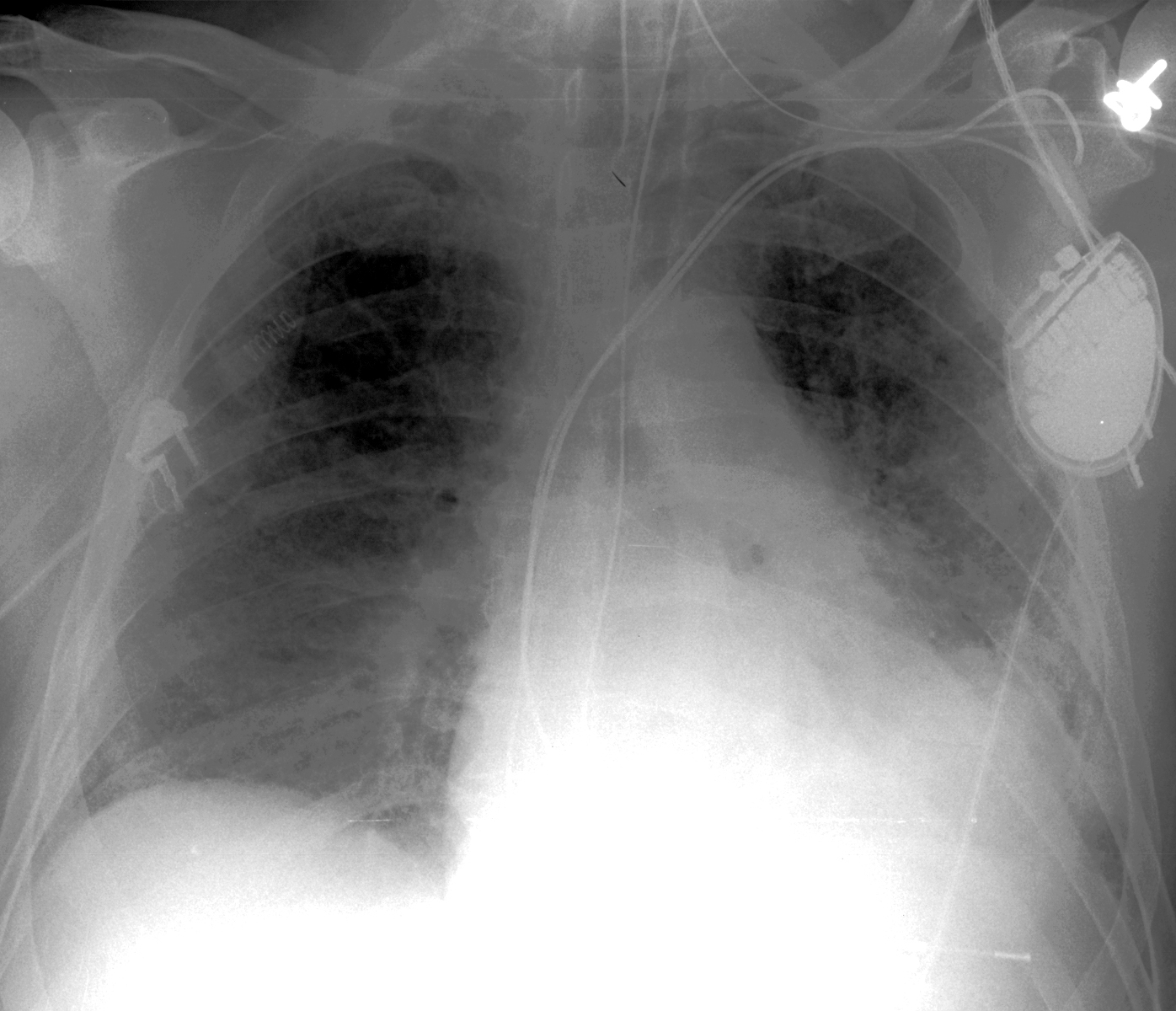ICU Chest Films > Fluid in the Chest > Adult Respiratory Distress Syndrome
Adult Respiratory Distress Syndrome (ARDS)
![]()
Adult respiratory distress syndrome (ARDS) is a term used to describe a constellation of clinical and radiographic signs and symptoms reflecting pulmonary edema in the absence of elevated pulmonary venous pressures. ARDS is relatively common in the ICU population and is associated with high mortality (~50%). The syndrome results from a variety of causes, including sepsis or pulmonary infection, severe trauma, and aspiration of gastric contents, all of which together account for 80% of cases. Whatever the initial cause, all share activation of the complement pathway with damage to the alveolar capillary endothelium, increased vascular permeability, and subsequent development of first interstitial and then alveolar pulmonary edema. Clinically, there is severe respiratory distress characterized by marked hypoxia that responds poorly even to administration of high concentrations of oxygen. Pulmonary capillary wedge pressure is usually normal. Decreased surfactant production leads to poor lung compliance and atelectasis that results in an intrapulmonary shunt with perfusion but no effective ventilation. Positive End Expiratory Pressure (PEEP) can help to decrease atelectasis, shunting while improving oxygenation. Patients surviving the syndrome may progress to pulmonary fibrosis or have no sequelae. The longer and more severe the ARDS, the more likely are long term consequences. Other factors may also contribute, such as age and preexisting COPD.

The progression of this patient's pulmonary disease is consistent with
ARDS.